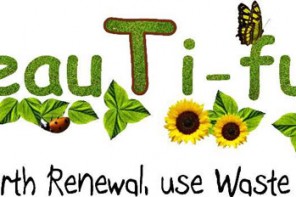Golf course developments and golf estates offer a number of benefits for a developing country such as South Africa. New firms are attracted to regions where golf courses are being built, they increase local property values and they also attract higher-spending social groups – which could mean a great deal for the economic situation of a semi-rural town or growing city.
The disadvantages of golf course development, however, seem to far outweigh the financial benefits. Loss of biodiversity, heavy water usage and pollution all contribute to golf course development being a more controversial topic than ever before. After a careful look at the facts, the dilemma seems to be deciding on whether South Africa has the resources and mitigation plans to support the continuing development of golf courses, which often portray an elitist and exclusive lifestyle, and whether we should rather be putting our resources to better use by supporting those who are most affected by biodiversity and water issues.
More and more new builds
South Africa has produced some of the international golfing super-heroes, such as Ernie Else, Gary Player and Retief Goosen. As a nation, we also boast some of the most famous golf courses in the world, such as the Gary Player Country Club at Sun City (which is home to the Nedbank Golf Challenge) as well as a number of courses that have featured on both the European PGA Tour and the local Sunshine Tour. But how many of these do we need?
South Africa, along with China and Spain, have experienced an unprecedented golf boom over the last few years, building more golf courses than ever before and attracting a record number of international tourists. According to Southafrica-travel.net, virtually every town in the country has its own golf course and there are more than 500 courses in the country.
All over poverty-stricken areas of the country, pricey golf courses are popping up. One of the main concerns is that property owners and golf course developers prefer to play their sport in some of South Africa’s prime ecological areas – such as the Garden Route (in the case of Fancourt Country Club Estate and the Pinnacle Point Golf Course), the bushveld of Limpopo (where Zebula Golf Course and Elements Golf Course are situated, amongst others) and across the dazzling coastline of the Northern Cape.
Water issues
Keeping the greens, well, “green”, requires a massive amount of money – not only in terms of pesticides and fertilizers, but also considering the amount of water they require. According to the Golf course Superintendents Association, golf courses in the US use approximately 414 500 000 litres a year – the Worldwatch Institute estimates there are over 35,000 golf courses around the globe.
The amount of water golf courses use varies greatly depending on the region, but on average they use about 10 800 000 litres of water a year. Each golf course uses enough water to provide at least 1200 people with their basic water needs for a year – in a country such as South Africa, this could make a world of a difference to the high number of people that are left without access to adequate water supplies.
Pollution issues
The pesticides and fertilizers kill off weeds and insects on a golf course, but they also impact the surrounding ecosystems, encourage the growth of alien species and discourage indigenous vegetation. In Wyoming, environmentalists lost a fight to halt a golf course development they said would drive bald eagles from nearby nests (wildlife biologists predicted the new development would drive away this rare species and, true to their prediction, the nests – including a nest that produced more eaglets during the past 26 years than any other nest in the region – were empty a year later).
These fertilizers and pesticides could also possibly be harmful to humans as well. Researchers at the University of Iowa’s College of Medicine reviewed the death certificates of over 600 golf course superintendents in 1994 and found abnormally high numbers of deaths from certain cancers. These results also correlated with similar studies that found an elevated risk for non-Hodgekin’s lymphoma among farm workers and pesticide applicators.
Who’s complaining about the damage?
It seems like local residents are the only ones voicing their concerns. A few years ago, residents of Mount Kisco (an upmarket suburb of New York) forced billionaire Donald Trump to back off a proposed golf course development that would have polluted the town’s only water supply with pesticides and fertilizers – the shocking aspect is that Trump only backed off after he lost the seven year battle.
In South Africa, there are a few courses who have switched names (the Brits Golf Club, for example, recently changed its name to “Seasons Eco Golf Estate” after a re-design of its 18 hole course), but it doesn’t seem that too many golf course owners are worried about mitigating their impact on the environment. Glendower Golf Estate is one of the institutions who are making an effort in recycling plastic and glass, producing compost from excess plant material and the installation of a grease trap at their wash-bay to prevent substances from contaminating the water. The only way these golf courses would be able to mitigate their impact on the ecosystem is by implementing water re-use systems, renewable energy solutions and recycling systems – but who’s going to be paying for that?
The liveeco team




